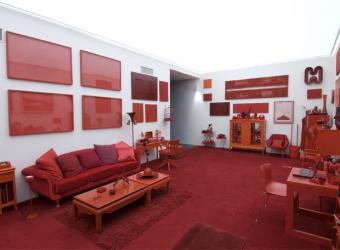I was completely thrilled when I opened my door this morning and found the two prints that I ordered the other day during that 20 x 200 gallery sale. To capitalize on my child-like excitement I decided that I should get them both framed immediately. While I was driving there it struck me that print framing would be a fabulous post topic. Framing is a part of the visual presentation of a piece and it is also essential to preservation. Since this is the case, it’s well worth noting the elements of proper framing.
Here are a few of my top tips…
1. Be sure to pick a trustworthy framer. If a print is improperly framed or framed with sub-par materials it will be ruined. You can contact the local chapter of the PPFA (Professional Picture Framers Association) for advice or you can solicit advice from a local gallery or museum. If you opt to get a referral from a gallery make sure that the gallery has had some longevity within the community and truly deals in fine art.
2. If you purchase a piece from a gallery that is already framed consider paying the additional price for the frame rather than getting it reframed by your own framer. The first reason for doing this is because the artist has typically chosen the framing that is on exhibit during a show. Its best, whenever possible, to present a piece in the way that an artist intended for it to be displayed. Plus, galleries will always get a better deal on framing than the average person; there’s no way an individual can compete with the consistent level of business that a gallery can promise a framer.
3. If you are given an option to have a gallery drop-off your unframed work or to drop it off yourself always opt to allow the gallery to move the print. This is especially true if you have a sizeable work. Transporting a piece can damage it, its surface shouldn’t be touched, and there’s too much chance for human error. Avoid this by having the gallery deliver. If something does happen during the move a reputable gallery will probably replace the print. Same goes for hanging and print deliveries. If a gallery/framer offers to deliver and hang a work accept the offer.
4. Be SURE to use UV glass and archival, non-acidic matting. Although there is extra expense associated with these materials they are absolutely essential. You may also consider getting glare-free glass; this also comes with an additional fee but it can be worth is if you’re hanging a print near a light source.
5. Once you choose a frame and the color of your matting, be prepared to either “float” the print or to choose to utilize the more traditional overlay matting. If you choose the floating method (which is usually what I prefer because I think it looks more contemporary) it will look like the print is suspended over the matting. When a print is floating framers will use small amounts of tape and spacers to keep the print in place so that it does not touch the glass. This is ok, and the tape will not damage the work. If you opt to use the more traditional overlay matting then a framer will typically use specially fitted corners to hold the print in place along with small amounts of tape to insure that there’s no movement. Overlay matting will often cost more especially since you will probably need to use more than one mat so that you will probably want more than one mat so that an images colors are accentuated.
6. Be prepared to spend big money for framing. Getting a work properly framed is often very expensive but it is an absolute necessity for purposes of conservation. For example, I would expect to pay around $600 to frame a 36 x 36 print using the floating method, a single colored mat in the background, without glare-free glass, and a very basic frame. Also be prepared to wait, it will typically take about two weeks for framing.
Tips for Framing Prints//
Good luck and happy framing!
3:53 PM
|
Labels:
Framing
|
This entry was posted on 3:53 PM
and is filed under
Framing
.
You can follow any responses to this entry through
the RSS 2.0 feed.
You can leave a response,
or trackback from your own site.
Subscribe to:
Post Comments (Atom)







1 comments:
Matilda, that was very informative! Thanks!
Post a Comment